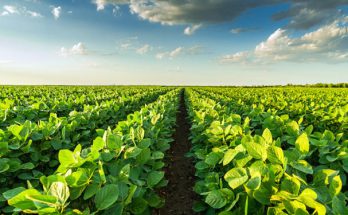
Earlier this week, the South African Reserve Bank Governor, Lesetja Kganyago, remarked that at the present moment the country’s fundamental economic problem is weak confidence. Kganyago’s comments come after the Bureau of Economic Research’s Business Confidence Index plunged to 29 index points in the second quarter of this year – the lowest level since the 2009 recession. This is reflective of the current political uncertainty and weak business activity.
Worth noting, however, is that some sectors of the economy continue to provide green shoots, despite the aforementioned challenges. In fact, the recent Agbiz/IDC Agribusiness Confidence Index results for the second quarter of 2017 underlined agriculture’s reputation as a sector that is counter cyclical.
While confidence and growth continue to dwindle in many sectors of the economy, the Agbiz/IDC Agribusiness Confidence Index declined marginally by one index point to 56 points. This shows that the sector remains in expansionary territory, as an index reading above 50 points indicates expansion in agribusiness activity and the inverse is true. This is the fourth consecutive expansionary reading, indicating that agricultural activity continues to stabilize following the damage of the 2015-16 drought.
Amongst other things, the Agbiz/IDC Agribusiness Confidence Index projects how South Africa’s agricultural gross domestic product (GDP) could perform in the succeeding quarters. Broadly, the index covers the 10 most important aspects or sub-indices influencing business activity in the agricultural sector, namely, turnover, net operating income, market share, employment, capital investment, export volumes, economic growth, general agricultural conditions, debtor-provision for bad debt and financing costs.
Amongst the aforementioned ten sub-indices, the capital investment, market share, employment, the volume of exports and debtor provision for bad debt sub-indices were the key underlying drivers of the sustained optimism in confidence in the second quarter of 2017. The general improvement in these particular sub-indices is largely in line with the robust recovery in agricultural production, particularly in summer grains and oil seeds.
Meanwhile, the decline in other sub-indices mirror the tail-end effects of the 2016 drought, particularly businesses operating in the horticulture, wine and insurance industries. To highlight a few of the aforementioned sub-indices, agribusinesses’ confidence regarding capital investment improved by six points from the previous quarter to 62. In fact, the incoming evidence shows that the farming community continues to invest in agricultural equipment such as tractors and combine harvesters. The most recent data indicates that tractor sales reached 493 units in May 2017, which is a 24 percent monthly uptick and 17 percent higher than the corresponding period last year.
The perception in the market share of the business sub-index improved by two index points from the previous quarter to 68. These results reflect the potential benefits of the 2017 summer rainfall, particularly in certain grain operating businesses which recently allowed farmers to deliver maize to silos with relatively higher moisture levels.
The perceptions regarding employment in the agricultural sector improved in the second quarter of this year from the previous one. The sub-index reached 59 points, up from 56. This suggests the improved expectation of seasonal employment as some horticulture and summer crop farms begin the harvest period, which requires more labour. All things being equal, we could see a complete reversal of the first quarter, where the sector shed 44,000 jobs, reducing the total labour force to 875,000 jobs.
Confidence in the export volumes sub-index improved by three index points from the previous quarter to 58. This is largely on the back of expected large grain and oil seed supplies. The 2017 summer grain and oil seed production levels are set to reach 18.03 million tonnes, which is a 92 percent annual increase. Moreover, favourable conditions in some citrus-growing areas also suggest that there could be good export activity this year. Agribusinesses’ perception suggests that the provision for bad debt might decline in the second quarter of 2017. The expected decline in bad debt is underpinned by expected large harvests in most areas of the country. The debtor provision for bad debt sub-index eased to 38 points from 39 in the previous quarter.
While each of the aforementioned sub-indexes is supported by its unique drivers, the key underlying factor behind this sustained optimism in the agricultural sector is the improvement in weather conditions, particularly the recent summer rainfall and its positive impact thereafter on crops. This means that this optimism is in actual fact, weather dependent. Luckily, the most recent weather updates suggest that the fears of another the El Niño weather phenomenon have eased. The data from the Australian Bureau of Meteorology shows that the next summer season could be neutral and not see another drought as previously feared.
Having said that, it is not all rosy in the agricultural sector. The persistent insecurity from possible “land expropriation without compensation” poses a risk of undermining the critical contribution of agriculture to the South African economy. The South African agricultural sector needs to maintain a delicate system of confidence, which is not just supported by rain but also by land tenure, investment and market-friendly policies.



